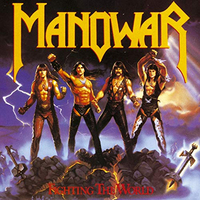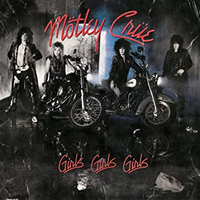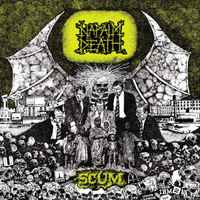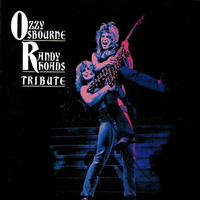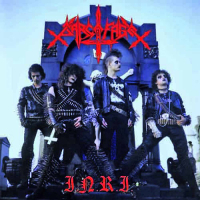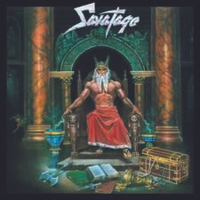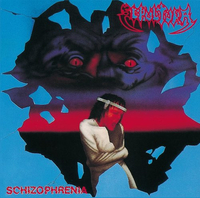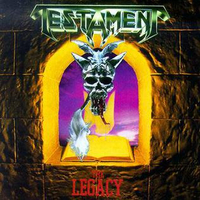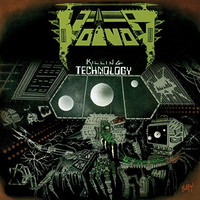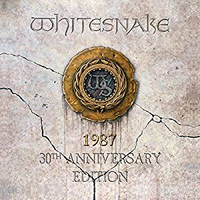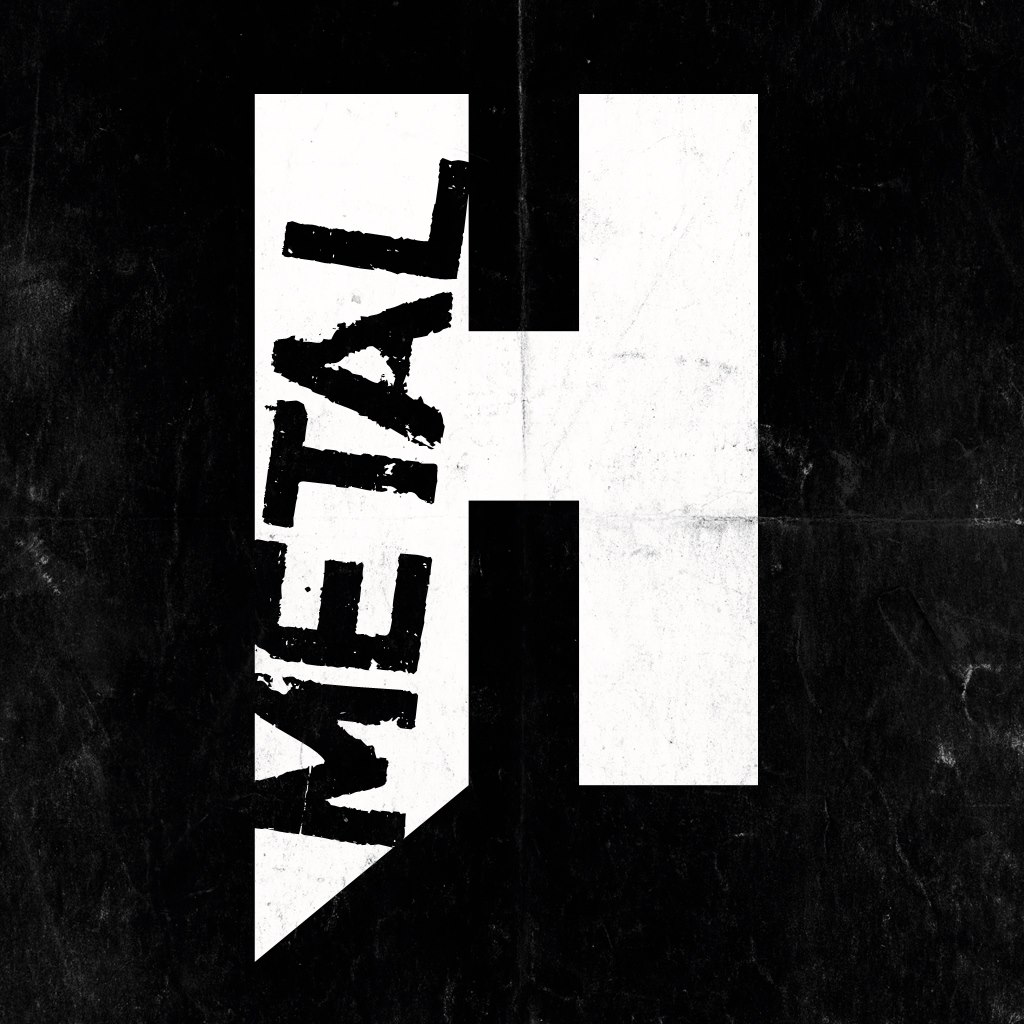Manowar – Fighting The World
Having parted from two major labels in four years, Manowar bounced back by signing to the illustrious Atlantic Records for their fifth album.
Nevertheless, a siege mentality prevailed in its belligerent title track and in the MTV-bashing Blow Your Speakers. As these defiant and brilliantly gonzoid heavy metal anthems proved, Manowar thrived on adversity.
Also included on this album is the seminal Black Wind, Fire & Steel, a key influence on modern European power metal and battle metal, plus a reworking of 1983’s mighty, quasi-mystical Defender, again featuring Orson Welles – the old stager’s last great performance.
Mötley Crüe – Girls Girls Girls
By 1987, a second wave of big- haired LA bands – including Guns N’ Roses – were snapping at Mötley Crüe’s cowboy-booted heels.
But the Crüe were still the swinging dicks of the LA scene, and Girls, Girls, Girls, the title track from their fourth album, celebrated the high life: a homage to the band’s favourite strip clubs, featuring revving Harleys and chick-baiting banter.
The album was an arena-rock juggernaut that reached No.2 on the US chart. But amid the big riffs and choruses, Nikki Sixx’s lyrics carried a sinister edge: Wild Side, a bulletin from LA’s meanest streets; Dancing On Glass, a morbid account of the author’s heroin addiction.
Napalm Death – Scum
The most influential British metal band since Iron Maiden? No argument. Grindcore godfathers Napalm Death’s debut album was an explosion of noise and fury. Its hyperspeed blastbeats and concrete-mixer growls were ridiculed at the time, but the shock wave this landmark in extremity has rippled down the decades to influence everyone from Slipknot to Andrew W.K.
The fact that the two sides of the original vinyl were recorded by two separate line-ups - the former featuring future Godflesh founder Justin Broadrick, the latter fronted by soon-to-be Cathedral mainman Lee Dorrian – and sounded distinctly different only added to the sense of controlled anarchy.
Ozzy Osbourne – Tribute
It was five years after the death of Randy Rhoads that Ozzy Osbourne sanctioned the release of this double-live set, recorded during their final tour together in 1981. In a handwritten note printed on the album’s cover, Ozzy stated: “I have hesitated to release this album for many reasons, but now I feel that this is the right time.”
Tribute is easily the best of Ozzy’s numerous live albums, as illustrated by brilliant performances on Crazy Train and Suicide Solution. A studio outtake of Rhoads’ beautiful instrumental Dee adds a poignant finale. As Ozzy rightly said, “He was a hero, a true legend.”
Sarcofago – I.N.R.I
When founding Sepultura guitarist Wagner “Antichrist” Lamounier left in 1985, supposedly because he felt they were too commercial, he started an underground monster with Sarcofago While they never matched Sep’s commercial success, it is arguable that they equalled them in terms of impact on the worldwide metal scene.
I.N.R.I. distilled the primitive rage of Venom, Sodom and Hellhammer and focused it through a lens of fanatical South American passion to create a blueprint for literally thousands of black and black thrash bands. Mayhem’s Euronymous adopted corpse paint due to his love of this album, setting the scene for everyone from Darkthrone to Behemoth.
Savatage – Hall Of The Mountain King
After their stunning 1983 debut, Sirens, these wayward Floridian pioneers dropped the ball on two disappointing records.
Apparently heading for commercial oblivion, the quartet recalibrated and marshalled their strengths, tightening, maturing and progressing the dark, atmospheric, twisty-turny power metal of the debut - a sound they’d never revisit after lucratively venturing down the rock opera rabbit hole with 1989’s Gutter Ballet.
They could scarcely improve on the slashing grandiosity of Hall Of The Mountain King; certainly not after the tragic death of ace guitarist Criss Oliva in 1993, whose wild, fluid neoclassical solos deck the Hall with regal finery.
Sepultura - Schizophrenia
A massive leap forward from Sepultura’s exhilarating if juvenile Morbid Visions debut, Schizophrenia introduced the world to new guitarist Andreas Kisser and the biting thrash riffs that would become the band’s hallmark over subsequent releases. Far more polished, with nods to the likes of Metallica and Slayer on Septic Schizo and Screams Behind The Shadows, the album retains a grim darkness that still pervades three decades on.
Testament - The Legacy
Easily going to toe-to-toe with thrash’s biggest and best debuts in the genre’s most fertile era, Testament’s debut thrummed with razor sharp musicality, menacing riffs and a youthful bluster that continued throughout the rest of the decade. The enduring anthem Over The Wall coupled with the unhinged assaults of C.O.T.L.O.D. and First Strike Is Deadly cemented the band’s position in the vanguard of the Bay Area scene.
Voivod - Killing Technology
Voivod’s third album was a hyperspace jump away from the primitive thrash of its predecessors. Increasingly complex music and souped-up production values combined to forge an early progressive metal milestone. Conceptually, too, they were entering a new universe: one that draw influence from the ongoing Cold War and the ever-present spectre of totalitarianism. It didn’t smooth out their abrasive edges, just reframed them in a different quantum realm. This truly was music from another dimension.
Whitesnake – 1987
It’s Whitesnake, Jim, but not as we knew ‘em. With David Coverdale jettisoning the ’Snake’s old, blues-rock inclinations, he teamed up with more MTV-friendly faces and recorded the mighty 1987. Chock full of hit singles – Here I Go Again, Is This Love, Crying In The Rain – it took the US (and world) by storm. Its success was helped by the appearance of David’s impossibly glamorous then-wife Tawny Kitaen in the accompanying video clips.
Metal Hammer Newsletter
Sign up below to get the latest from Metal Hammer, plus exclusive special offers, direct to your inbox!
